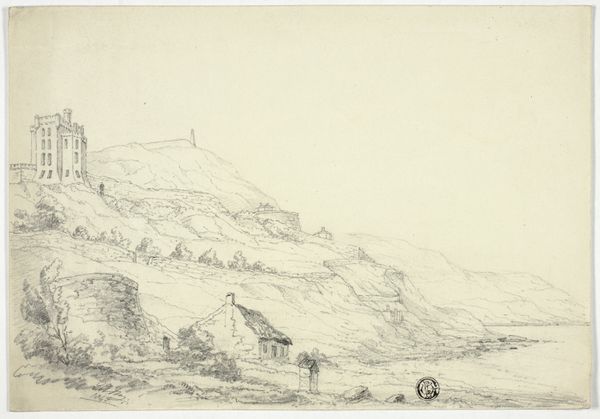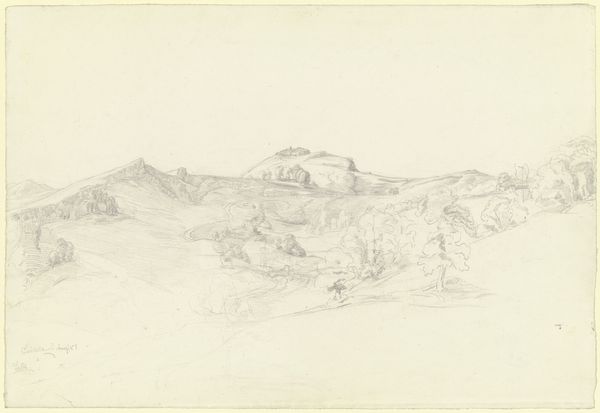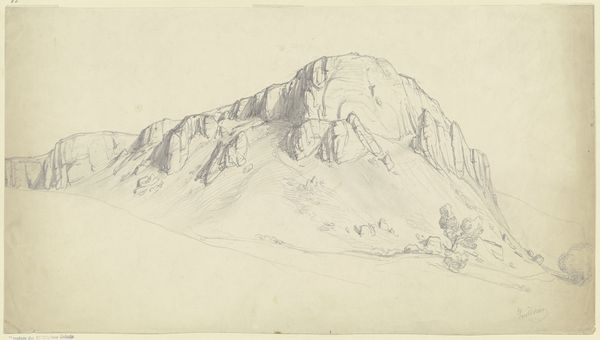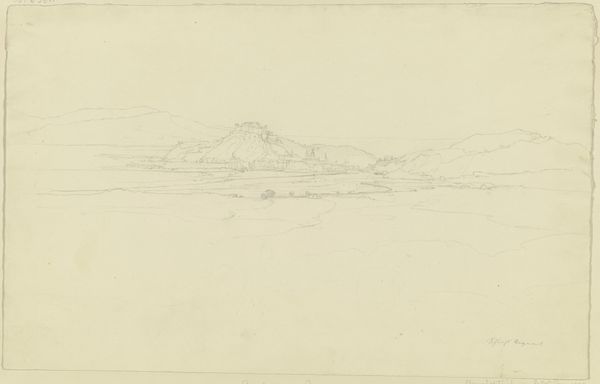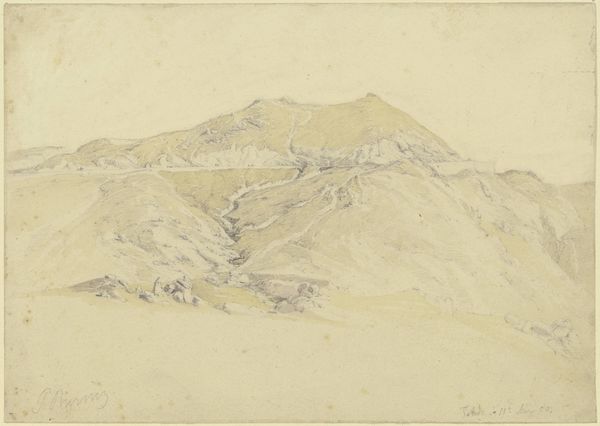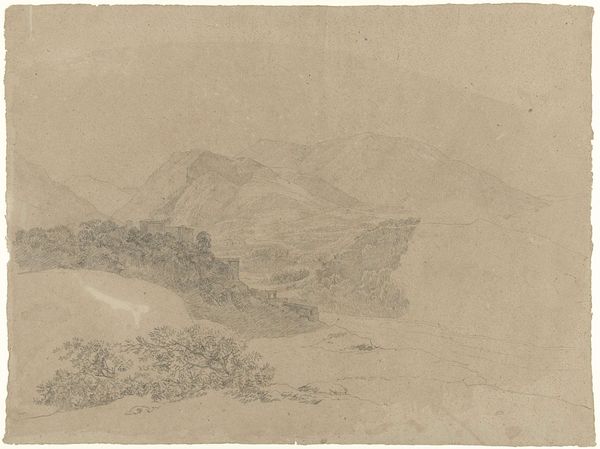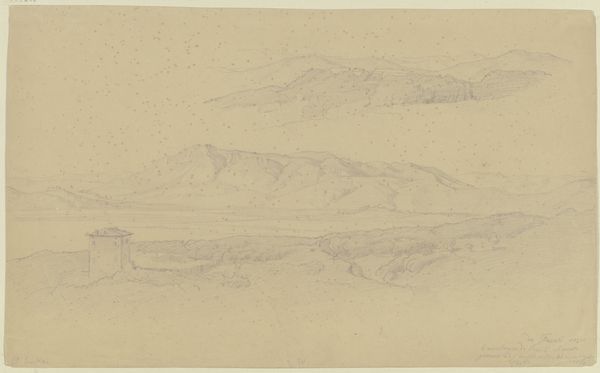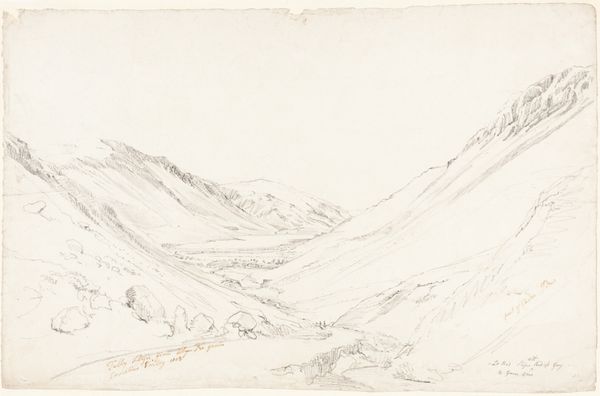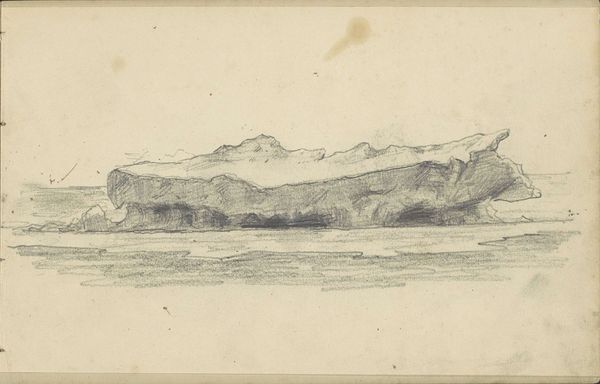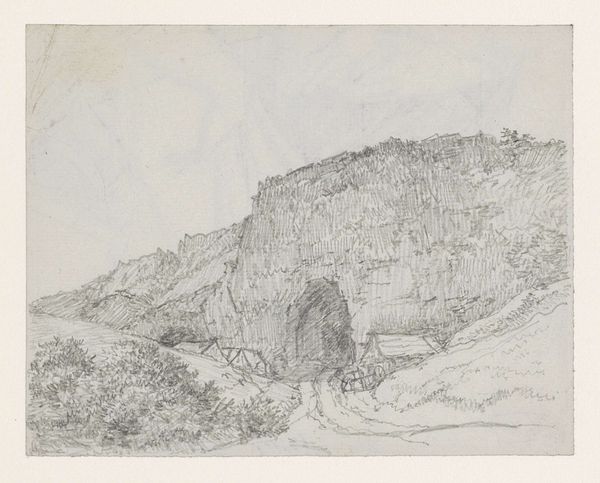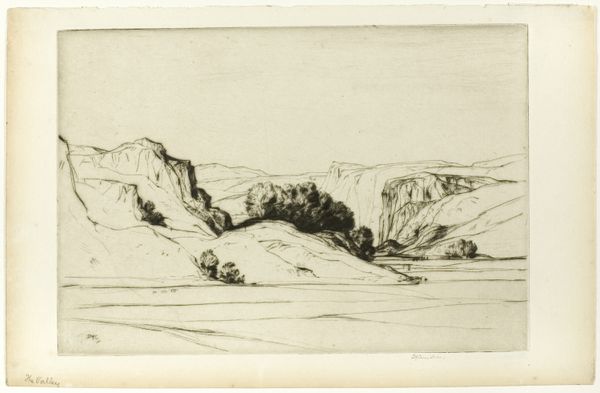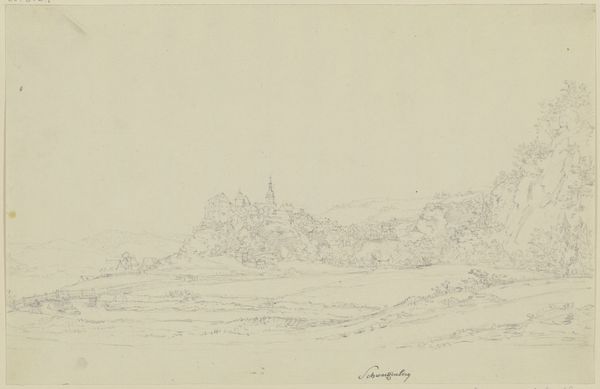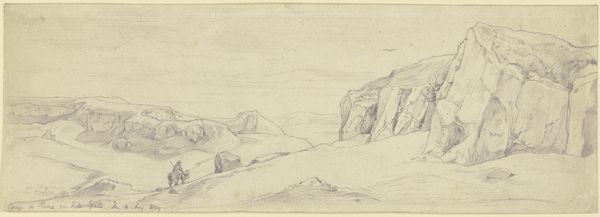
De hoge oever van een meer in de Italiaanse Campagna, met een forteres-achtig gebouw 1788 - 1839
0:00
0:00
hendrikvoogd
Rijksmuseum
drawing, pencil
#
drawing
#
lake
#
landscape
#
etching
#
pencil
#
italian-renaissance
Dimensions: height 435 mm, width 585 mm
Copyright: Rijks Museum: Open Domain
Curator: This ethereal scene is by Hendrik Voogd. The artwork, whose title translates to "The high bank of a lake in the Italian Campagna, with a fortress-like building," was crafted sometime between 1788 and 1839 using pencil and etching. Editor: It strikes me as rather placid, almost sleepy. The delicate gradations of tone create a very gentle composition. What draws you in, structurally? Curator: Note the clear delineation of space – the lake in the foreground, rising abruptly into a craggy bank and then the fortress perched above. The artist plays with recession using variations in the density of the pencil marks, and the fortress is deliberately ambiguous, inviting questions about the culture and the nature of security in that location during that period. Editor: It’s interesting that you use the word 'culture'. We tend to think of Italy through the lens of Grand Tourists. Could this work be critiquing their romanticism and actually confronting those questions of governance you brought up? The building does indeed look a bit ramshackle to have provided real power. Curator: Perhaps, and it certainly challenges assumptions about landscape's neutrality. We’re conditioned to interpret beautiful Italian vistas as evidence of Renaissance achievements, when really it's often built on deeply hierarchical power structures. The fragility of the etching enhances this sense of tenuous beauty, an almost decaying grandeur. Editor: It reminds me of Piranesi, but void of any grandstanding drama. Piranesi glorified Roman antiquity with his exaggerated perspectives; Voogd presents a somewhat understated reality, subtly charged, and deliberately drawing our attention to these high perches and likely sites of power and historical inequality. Curator: I think both readings are quite valid here, and that friction is part of the work’s enduring interest. He manages to convey that picturesque veneer whilst also suggesting underlying tensions. Editor: Exactly, a beautiful object hinting at less-than-beautiful realities, making it not just pretty to look at, but also something worthy of sustained reflection. Curator: A powerful statement communicated with remarkable delicacy.
Comments
No comments
Be the first to comment and join the conversation on the ultimate creative platform.
